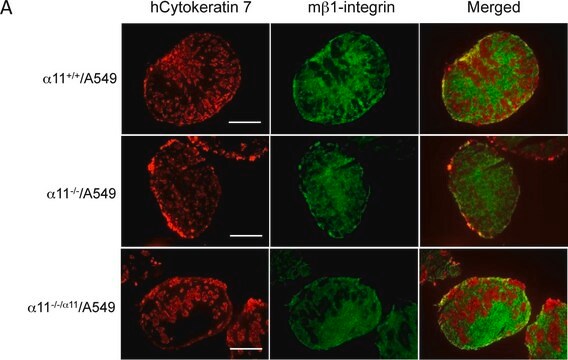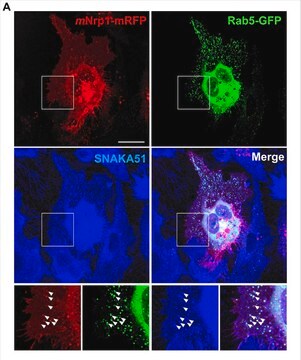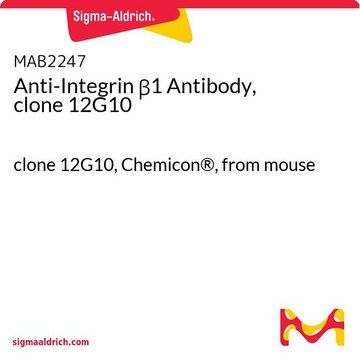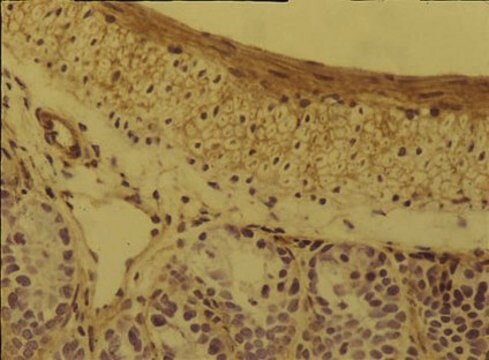AB1928
Anti-Integrin alpha 5 (ITGA5/CD49E) Antibody
CHEMICON®, rabbit polyclonal
Sinónimos:
CD49e, Fibronectin Receptor alpha Subunit
About This Item
Productos recomendados
Nombre del producto
Anti-Integrin α5 Antibody, CT, Intracellular, serum, Chemicon®
biological source
rabbit
Quality Level
antibody form
serum
antibody product type
primary antibodies
clone
polyclonal
species reactivity
human, chicken, hamster, rat, mouse
manufacturer/tradename
Chemicon®
technique(s)
ELISA: suitable
immunocytochemistry: suitable
immunofluorescence: suitable
immunohistochemistry: suitable
immunoprecipitation (IP): suitable
radioimmunoassay: suitable
western blot: suitable
NCBI accession no.
UniProt accession no.
shipped in
dry ice
target post-translational modification
unmodified
Gene Information
human ... ITGA5(3678)
General description
Specificity
Immunogen
Application
1:1000 dilution of a previous lot was used.
ELISA:
1:500-1:2000 dilution of a previous lot was used in ELISA.
Immunoprecipitation:
Recommended use of 5 μL of antibody for 5x106 cells.
Immunohistochemistry:
1:1000 dilution of a previous lot was used in tissue staining; suggested for use on acetone fixed tissue only.
Immunocytochemistry:
1:1000 of a previous lot was used in immunocytochemistry.
Optimal working dilutions must be determined by the end user.
Quality
Western Blot Analysis: 1:1000 dilution of this lot detected integrin alpha 5 on 10 μg of HUVEC lysates.
Target description
Physical form
Analysis Note
Mouse 3T3 fibroblasts Skin (Basement Membrane).
Other Notes
Legal Information
¿No encuentra el producto adecuado?
Pruebe nuestro Herramienta de selección de productos.
Optional
Storage Class
12 - Non Combustible Liquids
wgk_germany
WGK 1
flash_point_f
Not applicable
flash_point_c
Not applicable
Certificados de análisis (COA)
Busque Certificados de análisis (COA) introduciendo el número de lote del producto. Los números de lote se encuentran en la etiqueta del producto después de las palabras «Lot» o «Batch»
¿Ya tiene este producto?
Encuentre la documentación para los productos que ha comprado recientemente en la Biblioteca de documentos.
Nuestro equipo de científicos tiene experiencia en todas las áreas de investigación: Ciencias de la vida, Ciencia de los materiales, Síntesis química, Cromatografía, Analítica y muchas otras.
Póngase en contacto con el Servicio técnico








